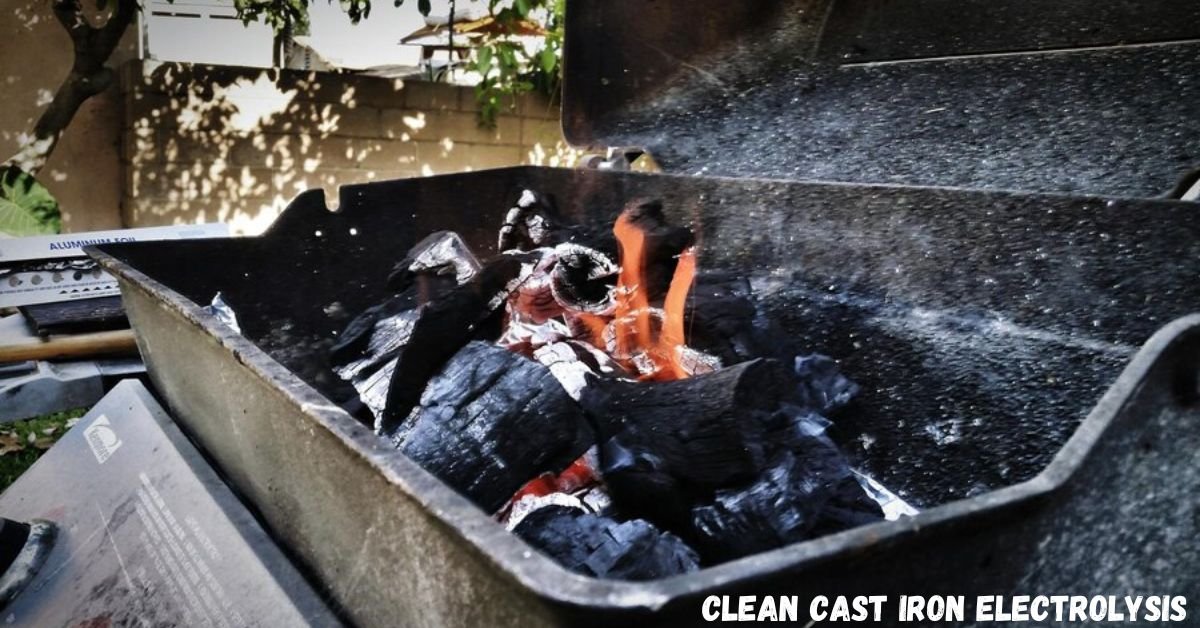Understanding Electrolysis for Cast Iron Cleaning
Electrolysis is a chemical process that uses direct electric current (DC) to drive a non-spontaneous reaction. In the context of cast iron restoration, electrolysis facilitates the removal of rust by converting iron oxide (rust) back into iron or into a form that can be easily scrubbed away. This method is particularly advantageous as it targets rust without compromising the integrity of the cast iron.
Materials Needed
To set up an electrolysis system for cleaning cast iron, you’ll require:
-
Non-conductive container: A plastic tub or bucket large enough to submerge the cast iron piece.
-
Sacrificial anode: Commonly, steel sheets or rebar are used. Avoid stainless steel due to hazardous byproducts.
-
Electrolyte solution: Water mixed with washing soda (sodium carbonate).
-
Power source: A manual battery charger, preferably 12-volt. Automatic chargers may not function correctly in this setup.
-
Insulated copper wires: For connecting components.
-
Protective gear: Rubber gloves and eye protection.
Step-by-Step Guide
-
Prepare the Electrolyte Solution:
-
Dissolve approximately ½ cup of washing soda per 5 gallons of water in your non-conductive container. Stir until fully dissolved.
-
-
Set Up the Anode:
-
Position the sacrificial anode inside the container, ensuring it doesn’t touch the cast iron piece.
-
Connect the anode to the positive (red) lead of the battery charger.
-
-
Suspend the Cast Iron:
-
Attach a wire to the cast iron item and suspend it in the solution, ensuring full submersion without contact with the anode.
-
Connect this wire to the negative (black) lead of the battery charger.
-
-
Initiate Electrolysis:
-
Set the battery charger to a manual 12-volt setting and turn it on.
-
Bubbles should begin forming around the cast iron, indicating the process is underway.
-
-
Monitor Progress:
-
Allow the item to undergo electrolysis for 12-24 hours, depending on the severity of rust.
-
Periodically check the progress by turning off the charger and inspecting the item.
-
-
Post-Electrolysis Cleaning:
-
Once rust removal is satisfactory, disconnect the setup.
-
Scrub the cast iron with a steel wool pad or brush to remove residual debris.
-
Wash thoroughly with soapy water, rinse, and dry immediately to prevent flash rusting.
-
-
Season the Cast Iron:
-
Apply a thin layer of cooking oil to the entire surface.
-
Heat in an oven at 350°F (175°C) for an hour to establish a protective seasoning layer.
-
Safety Considerations
-
Ventilation: Conduct the process in a well-ventilated area to disperse hydrogen gas produced during electrolysis.
-
Electrical Safety: Always unplug the battery charger before making adjustments to avoid electric shock.
-
Material Handling: Use appropriate protective gear to prevent skin contact with the electrolyte solution.
Comparison with Alternative Methods
To provide a clearer understanding of electrolysis in the context of cast iron restoration, here’s a comparison with other common methods:
| Method | Effectiveness | Time Required | Surface Impact | Safety Concerns | Cost |
|---|---|---|---|---|---|
| Electrolysis | High | 12-24 hours | Non-abrasive | Hydrogen gas emission; electrical safety | Moderate |
| Vinegar Soak | Moderate | 12-24 hours | Can etch metal if overexposed | Mild acid handling | Low |
| Oven Cleaning Cycle | Moderate | 3-4 hours | High heat can warp metal | Fire hazard; fumes | Low |
| Sandblasting | High | 1-2 hours | Abrasive; removes metal surface | Inhalation risk; equipment cost | High |
Electrolysis offers a balanced approach, effectively removing rust without the abrasive impact of methods like sandblasting. While it requires a longer processing time, its ability to preserve the original surface of the cast iron makes it a preferred choice among restoration enthusiasts.
Conclusion about clean cast iron electrolysis
Clean cast iron electrolysis is one of the most effective and non-abrasive methods for restoring rusted cast iron cookware and tools. By using a simple electrolysis setup, you can safely remove rust while preserving the integrity of the metal. Compared to alternative cleaning methods, electrolysis offers a precise and efficient way to rejuvenate old cast iron without causing damage.
For best results, always follow safety precautions, monitor the process carefully, and season the cast iron afterward to protect it from future rust. Whether you’re a collector, a home cook, or a restoration enthusiast, electrolysis ensures your cast iron remains in top condition for years to come.

